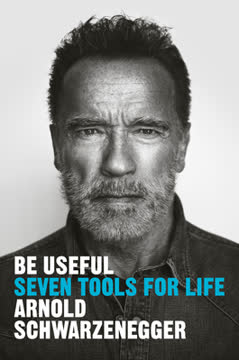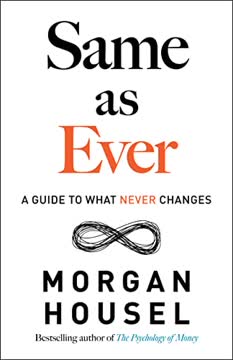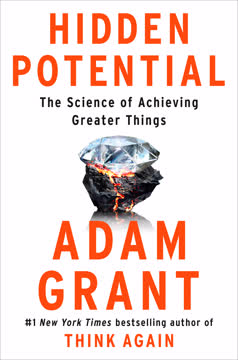Key Takeaways
1. Exercise is the most powerful longevity drug, impacting both lifespan and healthspan
If you adopt only one new set of habits based on reading this book, it must be in the realm of exercise.
Exercise is essential. Regular physical activity has been shown to extend lifespan by up to a decade and significantly improve healthspan. It delays the onset of chronic diseases across the board and is amazingly effective at slowing or reversing both physical and cognitive decline. The benefits of exercise begin with any amount of activity above zero and increase from there.
VO2 max is crucial. Peak aerobic cardiorespiratory fitness, measured as VO2 max, is perhaps the single most powerful marker for longevity. Studies have found that individuals with below-average VO2 max for their age and sex are at double the risk of all-cause mortality compared to those in the top quartile. Even moving from the bottom 25% to below average (25th to 50th percentile) can cut your risk of death nearly in half.
Strength matters too. Muscle mass and strength are also powerfully correlated with living longer. A ten-year observational study found that those with low muscle mass were at 40-50% greater risk of mortality than controls. Subjects with low muscle strength were at double the risk of death. Maintaining and building muscle mass becomes increasingly important as we age, as it helps protect against frailty and improves overall quality of life.
2. Stability training is crucial for injury prevention and long-term fitness
First, do thyself no harm.
Stability is foundational. Stability training is essential for any kind of movement, particularly if our goal is to be able to keep doing that movement for years or decades. It is the foundation on which cardiovascular fitness and strength must rest. Without it, you are likely to experience an injury that limits your movement and possibly knocks you out of the Centenarian Decathlon for good.
Relearn natural movements. The theory behind Dynamic Neuromuscular Stabilization (DNS) is that the sequence of movements young children undergo on their way to learning how to walk is part of a program of neuromuscular development essential to our ability to move correctly. As adults, we need to retrain our bodies and brains in those patterns of perfect movement that we learned as little kids.
Focus on key areas:
- Breath control and diaphragm strength
- Foot and toe strength and dexterity
- Spine awareness and control
- Shoulder stability
- Hand and grip strength
3. Nutrition is about personalized biochemistry, not one-size-fits-all diets
Instead of diet, we should be talking about nutritional biochemistry.
Personalized approach. There is no one perfect diet that works for everyone. Each person's metabolism is different, and what works for one individual may not work for another. The key is to find the best mix of macronutrients for each patient, creating an eating pattern that helps them achieve their goals in a sustainable way.
Three main strategies for reducing caloric intake:
- Caloric Restriction (CR): Eating less in total
- Dietary Restriction (DR): Eating less of specific elements (e.g., meat, sugar, fats)
- Time Restriction (TR): Restricting eating to certain times, including fasting
Macronutrient balance. Focus on finding the right mix of alcohol, carbohydrates, protein, and fat for your individual needs and goals. Pay special attention to protein intake, as it's crucial for muscle maintenance and overall health, especially as we age.
4. Continuous Glucose Monitoring (CGM) revolutionizes nutritional decision-making
CGM is a tool that can help us achieve that. We use it in healthy people in order to help them stay healthy. That shouldn't be controversial.
Real-time insights. CGM provides continuous, real-time information on blood glucose levels, allowing patients to see how their blood sugar responds to different foods, exercise, sleep, and stress. This technology enables personalized nutritional decisions and rapid adjustments to flatten the glucose curve and lower average levels.
Two phases of CGM use:
- Insight phase: Learning how different factors affect glucose readings
- Behavior phase: Using knowledge to make better nutritional choices
Beyond glucose. While CGM measures only one variable, it can provide valuable insights into overall metabolic health. However, it's important to consider other biomarkers and factors when determining the ideal diet for an individual.
5. Protein intake is critical for muscle maintenance and overall health, especially as we age
Remember, muscle mass and strength are also powerfully correlated with living longer.
Protein requirements. The standard recommendations for daily protein consumption (0.8 g/kg of body weight) are inadequate for optimal health and muscle maintenance. For active people with normal kidney function, aim for 1 gram per pound of body weight per day (2.2 g/kg/day) as a starting point.
Optimal consumption. Spread protein intake over four servings per day, each at ~0.25 g/lb of body weight. This helps avoid losing amino acids to oxidation and ensures they're available for muscle protein synthesis.
Benefits of adequate protein:
- Maintains and builds muscle mass
- Improves physical performance in the elderly
- May have beneficial effects on metabolism
- Helps with satiety, potentially reducing overall calorie intake
6. Alzheimer's and other neurodegenerative diseases can potentially be prevented or delayed
Medicine 2.0 cannot help us. At all. The point at which Medicine 2.0 steps in, the point of diagnosis, is also likely near the point of no return for most Alzheimer's patients, beyond which little or nothing can be done.
Early intervention is key. Prevention and early intervention are crucial for Alzheimer's and other neurodegenerative diseases. By the time symptoms appear, it may be too late to effectively treat or reverse the condition. Focus on addressing risk factors and maintaining brain health decades before potential onset.
Multifaceted approach:
- Exercise: Both aerobic and strength training benefit brain health
- Nutrition: Focus on metabolic health and reducing inflammation
- Sleep: Prioritize good sleep habits and address sleep disorders
- Cognitive engagement: Maintain mental stimulation and social connections
- Stress management: Reduce chronic stress and practice relaxation techniques
Personalized prevention. Genetic factors, such as the APOE e4 allele, can significantly increase risk. However, these are not deterministic, and targeted interventions can help mitigate genetic predisposition.
7. Metabolic health is foundational to preventing chronic diseases
If we are to reduce deaths from cardiovascular disease, we need to begin thinking about prevention in people in their forties and even thirties.
Metabolic syndrome. Metabolic dysfunction, characterized by conditions like insulin resistance, high blood pressure, and abnormal lipid levels, is a key driver of chronic diseases. Addressing metabolic health is crucial for preventing cardiovascular disease, type 2 diabetes, and potentially reducing cancer and Alzheimer's risk.
Early detection and intervention. Look for early signs of metabolic dysfunction, such as elevated insulin levels, even before traditional markers like HbA1c show abnormalities. Intervene early with lifestyle changes and, if necessary, medications to prevent progression to full-blown metabolic syndrome or type 2 diabetes.
Key focus areas:
- Maintain healthy body composition, especially reducing visceral fat
- Optimize insulin sensitivity through diet and exercise
- Monitor and manage blood pressure and lipid levels
- Address sleep quality and stress management
8. Early detection and prevention are key to fighting cancer effectively
The real beauty of this is that if liquid biopsies deliver on their promise, we could completely flip the time line of cancer so that we are routinely intervening early, when we have a chance of controlling or even eliminating the cancer—rather than the way we typically do it now, coming in at a late stage, when the odds are already stacked against the patient, and hoping for a miracle.
Early detection saves lives. Catching cancer in its early stages dramatically improves treatment outcomes and survival rates. Emerging technologies like liquid biopsies, which can detect trace amounts of cancer-cell DNA via a simple blood test, hold tremendous promise for early detection.
Prevention strategies:
- Maintain metabolic health to reduce cancer risk
- Avoid known carcinogens like tobacco smoke
- Regular screenings appropriate for age and risk factors
- Healthy lifestyle choices: diet, exercise, stress management
Immunotherapy advances. New immunotherapy treatments have shown remarkable success in some types of cancer, potentially offering long-term remission or even cures for previously untreatable cases. Continued research and development in this area may revolutionize cancer treatment.
9. Cardiovascular disease risk can be significantly reduced through targeted interventions
Cardiovascular disease remains our deadliest killer, the worst of the Horsemen. In the next few pages, I hope to convince you that it need not be—that with the right strategy, and attention to the correct risk factors at the correct time, it should be possible to eliminate much of the morbidity and mortality that is still associated with atherosclerotic cardiovascular and cerebrovascular disease.
Focus on apoB. ApoB-containing lipoproteins, including LDL and VLDL, are the primary drivers of atherosclerosis. Lowering apoB concentration as much as possible, as early as possible, is crucial for reducing cardiovascular risk.
Beyond cholesterol. Traditional cholesterol panels (LDL-C, HDL-C) are insufficient for assessing cardiovascular risk. Focus on more comprehensive markers like apoB concentration and advanced imaging techniques like CT angiograms to assess arterial health.
Lifestyle and medical interventions:
- Dietary changes to reduce apoB and improve overall metabolic health
- Regular exercise to improve cardiovascular fitness
- Medications like statins when appropriate
- Address other risk factors: high blood pressure, smoking, inflammation
10. Centenarians offer valuable insights into longevity and healthspan
The older you get, the healthier you have been.
Delayed disease onset. Centenarians tend to develop age-related diseases much later in life than the general population, if at all. This compression of morbidity results in not only longer lifespans but also extended healthspans.
Genetic and lifestyle factors. While some centenarians may have genetic advantages, many of their longevity-promoting habits can be adopted by others. These include:
- Maintaining metabolic health
- Regular physical activity
- Strong social connections
- Stress management and resilience
- Purposeful living
Learning from outliers. Studying centenarians and other long-lived individuals can provide valuable insights into the biological mechanisms of aging and potential interventions to extend both lifespan and healthspan for the general population.
Last updated:
FAQ
What's Outlive: The Science & Art of Longevity about?
- Focus on Longevity: The book delves into the science and strategies for extending both lifespan and healthspan, emphasizing living longer with a high quality of life.
- Chronic Disease Prevention: It highlights the shift from treating acute illnesses to preventing chronic diseases like heart disease, cancer, and neurodegenerative diseases.
- Personalized Approach: Peter Attia advocates for a proactive, individualized approach to health, encouraging informed decisions and lifestyle changes.
Why should I read Outlive: The Science & Art of Longevity?
- Comprehensive Insights: The book offers a deep understanding of aging's biological processes and factors contributing to longevity.
- Actionable Strategies: Attia provides practical advice that readers can implement to improve health and potentially extend lifespan.
- Expert Perspective: As a physician, Attia combines personal experiences with scientific research, offering a credible perspective on longevity.
What are the key takeaways of Outlive: The Science & Art of Longevity?
- Healthspan vs. Lifespan: Emphasizes improving healthspan, the period of life spent in good health, over merely extending lifespan.
- Four Horsemen of Aging: Identifies heart disease, cancer, neurodegenerative diseases, and type 2 diabetes as major impacts on longevity.
- Proactive Medicine: Advocates for early intervention and lifestyle changes to prevent chronic diseases before they develop.
What are the best quotes from Outlive: The Science & Art of Longevity and what do they mean?
- "We need to go upstream...": Emphasizes proactive health care, focusing on prevention rather than treatment.
- "The only way to create a better future...": Highlights the importance of early intervention and lifestyle changes for better health outcomes.
- "Longevity is not just about living longer...": Urges readers to focus on healthspan, ensuring quality of life alongside longevity.
What is the "Centenarian Decathlon" in Outlive: The Science & Art of Longevity?
- Concept of Longevity: A metaphorical framework outlining physical and mental capabilities to maintain into old age.
- Focus on Functionality: Encourages preparing for desired activities in old age through exercise and health management.
- Personalized Goals: Suggests defining individual versions of the Centenarian Decathlon based on personal interests and lifestyle.
How does Outlive: The Science & Art of Longevity define healthspan?
- Quality of Life: Defined as the period free from serious disease or disability, encompassing physical and cognitive function.
- Dynamic Concept: Healthspan is about thriving and maintaining vitality as one ages, not just the absence of illness.
- Malleable Future: Emphasizes that healthspan can be improved through lifestyle choices, making it a key focus for longevity.
What are the "Four Horsemen of Aging" in Outlive: The Science & Art of Longevity?
- Major Chronic Diseases: Refers to heart disease, cancer, neurodegenerative diseases, and type 2 diabetes.
- Interconnected Risks: These diseases are interconnected, often exacerbated by metabolic dysfunction.
- Prevention Focus: Stresses early understanding and addressing of these diseases to improve health outcomes.
How does Outlive: The Science & Art of Longevity address nutrition?
- Nutritional Biochemistry: Focuses on how different nutrients affect metabolism and overall health.
- Personalized Eating Patterns: Advocates for individualized eating patterns rather than one-size-fits-all diets.
- Caloric Restriction Insights: Discusses benefits of caloric restriction on metabolic health and longevity.
What role does exercise play in longevity according to Outlive: The Science & Art of Longevity?
- Exercise as Medicine: Described as the most powerful longevity drug, improving physical and cognitive health.
- Types of Exercise: Includes strength training, aerobic efficiency, and stability, each contributing to healthspan.
- Personalized Approach: Encourages developing a personalized exercise regimen aligned with goals and capabilities.
What is the significance of rapamycin in Outlive: The Science & Art of Longevity?
- Longevity Drug: Highlighted as a groundbreaking drug shown to extend lifespan in animal studies.
- Mechanism of Action: Slows cellular growth, promotes autophagy, and enhances metabolic health.
- Potential for Humans: Discusses challenges and potential of using rapamycin in humans for longevity.
How does Outlive: The Science & Art of Longevity suggest managing stress?
- Understanding Stress: Discusses physiological and psychological effects of stress on health.
- Stress Management Techniques: Offers strategies like mindfulness, exercise, and setting boundaries.
- Emotional Regulation: Emphasizes learning healthy responses to stressors for improved well-being.
What is the overall message of Outlive: The Science & Art of Longevity?
- Holistic Approach to Longevity: Advocates for a comprehensive view of health, encompassing physical, mental, and emotional well-being.
- Empowerment through Knowledge: Encourages understanding the science behind aging for informed health choices.
- Personal Responsibility: Stresses proactive measures in diet, exercise, sleep, and emotional health for a longer, healthier life.
Review Summary
Outlive: The Science & Art of Longevity receives mostly positive reviews, praised for its comprehensive approach to longevity and health. Readers appreciate Attia's focus on prevention, exercise, and emotional well-being. Some criticize the book's length and repetitiveness, while others find it inspiring and life-changing. The book's emphasis on proactive healthcare, the concept of healthspan versus lifespan, and the importance of exercise resonates with many readers. Critics note that the book may be overwhelming for some and lacks depth in certain areas.
Similar Books










Download PDF
Download EPUB
.epub digital book format is ideal for reading ebooks on phones, tablets, and e-readers.




